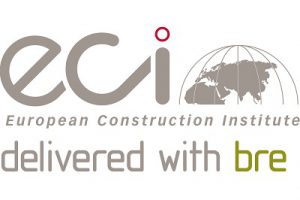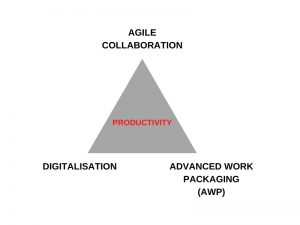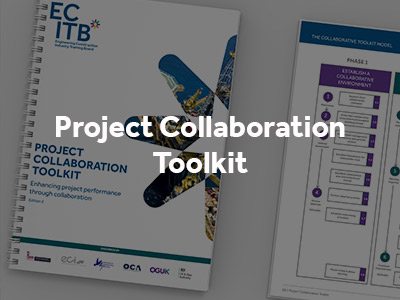
Every cloud has a silver lining…or so the saying goes.
Today, Engineering Construction is blanketed by some threatening storm clouds. So, is there a silver lining hidden somewhere amongst these seemingly treacherous conditions? I believe so.
For more than 25 years there has been a growing need for change to the way in which Engineering Construction projects are conceived, procured and delivered – a great deal has been written on the subject. In the same period, Engineering Construction productivity has stagnated or declined compared with other industries competing for investment – again, much has been written on the subject.
While market demand for, and the price of, oil have fluctuated over this period, both have been sufficiently stable to mask the deficiencies in Engineering Construction contracting arrangements and the corresponding wastage inherent in declining productivity.
Although there have been several productivity and performance enhancing initiatives over the period, these have not been widely adopted. The potential benefits of previous “silver linings” (such as the 2014 / 2015 oil price collapse) to change the approach to projects and improve productivity and performance were sacrificed in preference of preserving the status quo. But, with few exceptions, Engineering Construction productivity, performance and project out-turn results continued on their relentless decline.
Today, we are in a different world of:
1. Economics
Plant investment costs and delivery times are typically, respectively, too high and too long and there is considerable uncertainty regarding the forecasts of the final position on both. Conversely, supply chain margins are generally unsustainable, thereby restricting the investment necessary to upgrade competences, expertise and capability. Taken “in-the-round”, Engineering Construction is not an attractive investment prospect.
2. Oil Price
Following a reasonable recovery after falling to less than USD 20 per barrel at the global onset of COVID-19, the price of oil has regressed today to around USD 40 per barrel as demand continues to remain depressed and production is relatively high. The corresponding negative impact on Oil Majors’ share prices has been reported widely.
3. Competing Providers
What was a burgeoning renewables industry 25 years ago, especially wind and solar, has now become a major energy sector player and a serious competitor to fossil-fuels. However, with the development of new energy sources, there was not, despite the opportunity, any new thinking about the way these projects are conceived, procured and delivered – most follow the conventional system and we can observe the results.
4. Covid-19
While the pandemic will eventually be overcome, there is no certainty at the present time when this is likely to happen. The full effect on the world economy has not yet been determined but it may be expected that this has some long-lasting effects, not least for Engineering Construction globally.
So where is the “silver lining”? I suggest it resides in a combination of:
• Identifying and learning from missed opportunities for change in the past, e.g. industry has not made the most of collaborative working practices that have existed for the last 20 years or more
• Accepting that the “traditional contacting arrangements” – the race to the bottom in terms of price, risk and conditions – are no longer fit-for-purpose
• Recognising that emerging new energies (e.g. “green hydrogen” etc.), like renewables before them, provide an opportunity to conceive, procure and deliver projects completely differently and far better
• Knowing of, recognising and understanding the positive results already obtained from innovative working practices and adopting and progressively developing these, e.g. Advanced Work Packing and associated interventions
• Building on the “benefits” of COVID-19 such as remote working, effective communication, less travel etc. and being aware of and providing against the downsides
• Embracing fully, digitalisation and transparent data and making the most of artificial intelligence
• Driving standardisation in Components and Sub-Systems across common Industries, e.g. JIP33 in Oil & Gas driven by IOGP
• Recognising that, notwithstanding technological advancements, it is people who deliver projects and will be so for the foreseeable future – driving improvement in “people performance” and reinforcing underlying competence and experience is fundamental to delivering projects successfully.
• Recasting the workforce capacity in terms of quality and quantity and making Engineering Construction an industry attractive to the younger generation through latest technologies
• Removing unnecessary bureaucracy and keeping processes lean for faster and more reliable controls and reporting
For those who say “we have been here before and nothing changed, so what makes you think it’s different this time?”, I have two things to say;
1. We are confronted with a combination of factors that are unprecedented – there is no benchmark against which to measure or assess, nor any formal reference point or guide
2. There is, especially in Europe, political will, particularly to invoke action to eliminate carbon emissions, that is already and will continue to fundamentally affect Engineering Construction.
The imperative for Engineering Construction is to become an attractive investment proposition by reducing investment costs and delivery times substantially so that plants are competitive & affordable while simultaneously enabling the supply chain to achieve reasonable & sustainable margins, and improving the reliability of forecasted project out-turn results.
The key is to eliminate waste and thereby improve productivity significantly. In this context I believe there are three interdependent pillars of sustainable change that need to work in unison as illustrated below:

Case Studies indicate that Collaborative Working in conformity with the ECITB Project Collaboration Toolkit can reduce wastage and improve productivity, resulting in reduced cost and delivery times.
Reports from industry applying AWP also indicate signification reductions in wastage and improvement in productivity to produce considerable cost and schedule savings.
AWP (Advanced Work Packaging) utilises or can also encapsulate several other Innovative Working Practices such as Workface Planning (or Last Planner), 4/5/6-D Planning, Lean Construction, Factory-Thinking and Modularisation, Standardization and use of off-the-shelf components and Building Information Modelling (BIM).
There is indication that the combination of Collaborative Working and AWP has the potential to drive down plant investment costs and delivery times significantly as well as improving safety and quality and also afford the opportunity to generate better supply chain margins. The full benefits of AWP can only be realised by adopting Collaborative Working practices.
As with Collaborative Working, the implementation of AWP and associated innovative work practices primarily require a mind-set change to the way in which work is planned, organised and executed. AWP also benefits significantly from the adoption of digitalisation and standardised data models. However, operating digitalised systems effectively also requires Collaborative Working.
Therefore, as an industry, we need common data standards that underpin our typically generic activities, in order that we can, as eco-system partners, effectively collaborate in a transparent and productive manner using a ‘common language’. In this context, AWP can drive a fully integrated solution by steering digitalised engineering through standardising the data requirements from document metadata, project schedules, model attributes, material management systems, turnover systems etc.
The Case Studies exhibited in the ECITB’s Project Collaboration Toolkit and the
projects applying AWP practice, typically operate on existing forms of contract. It is evident that the change in project execution practice brought about by these innovative interventions could be reinforced and accelerated into wider common use by a contracting arrangement specifically geared to the principles of collaborative working set out in the ECITB Project Collaboration Toolkit. In this context, the European Construction Institute intends to launch the preliminary draft of its Collaborative Working Agreement (the contract for collaborative working) for industry peer review in the coming weeks.
The need to change the way in which Engineering Construction conceives, procures and delivers projects is real and present, the tools and systems to implement that change are available and developing, and the benefits of change are evident. Engineering Construction ought not to waste the opportunity to change. However, change can only, realistically, be owner / investor driven and building cross-industry momentum and support is key to effecting this change.
So, as an industry, let’s not waste the silver lining!
John Fotherby
Chair
European Construction Institute


Comments are closed.